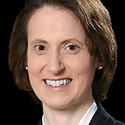09:00 AM
Top 10 Lessons OMIG Learned From Analytics
Last year, the Ohio Mutual Insurance Group talked about how it uses the SAS Business Analytics tool to predict tolerances for homeowners policy premium increases. Now Dave Grove, vice president of product management for the Bucyrus, Ohio, insurer, discusses the top 10 lessons it learned from the initiative.
10. Just get started.
"My No. 1 takeaway from this initiative is: Don't hesitate to take a similar modeling path, regardless of your company's size or resources," Grove told us. "We have just a handful of SAS users, but we've been able to benefit so immensely from our initial modeling project that we have a dozen more in the pipeline."
9. Expert analytics tool users are critical.
A significant contributor to modeling success is access to expert resources. "One of our actuaries is familiar with analytics and has over two decades of SAS experience," Grove said. "Absent that, we would recommend reaching out to SAS, which can provide excellent support."
8. The greatest profitability challenges should take modeling priority.
Though it originally intended to move from homeowners modeling to automobile and commercial lines, OMIG has altered its course. "Most of our profitability issues over the past few years have been with homeowners policies, so we'll continue focusing our analytics efforts on homeowners before moving on to auto or commercial."
7. A three-part homeowners elasticity model can be a strong predictor of outcomes.
OMIG's homeowners model contains three components: an individual's insurance score within various ranges, the presence of an OMIG automobile policy, and customer longevity. "Although one of the components proved a somewhat stronger predictor than the other two, the combination of components are a very strong predictor. We saw very little variation between actual and modeled performance."
6. Analytics can help set new product premiums.
In addition to its two legacy offerings, OMIG applied its model to determining rates for new homeowners products. "At the start of 2014, we replaced our legacy products with new products using about a 6% higher premium rate," Grove said. "Although adoption was slightly behind our estimates in the early months, it's increased steadily as agents become more familiar and comfortable with selling the products."
5. Modeling can help move legacy policyholders to new products.
Of its two legacy products, OMIG's higher-value coverage will be converted to the new product in 2015. Modeling will play a starring role. "Most of the affected policyholders will see single-digit price increases. However, some will be double-digits, and in those cases, we may experience retention rate declines. But some exposures would be better not to underwrite, meaning we expect positive benefits overall."
4. Analytics modeling can improve a variety of underwriting tasks.
Beyond premium modeling, OMIG is applying analytics to other homeowners rating tasks. "For example, we're developing a property re-inspection model. It will help us use characteristics to determine re-inspection frequency for specific exposures, rather than using time-based re-inspections for all exposures."
3. Despite price and coverage changes, homeowners retention rates can be pushed higher.
For 2014, OMIG needed not only to increase premiums for its two legacy products, but also to raise minimum deductibles for wind and hail to compensate for recent weather patterns. Despite this one-two punch, its modeling kept retention strong. "We saw a slight retention increase from 87.6% to 88.2%."
2. Homeowners loss ratios and profitability can be improved.
Due to the premium increases, OMIG's modeling helped reduce loss rations from "58% to 54% in one product and 62% to 61% in the other," Grove said.
1. Homeowners customers can tolerate significant targeted premium increases.
"We introduced near-double-digit homeowners premium increases. Using analytics modeling, we accomplished it without negative retention impacts."
Anne Rawland Gabriel is a technology writer and marketing communications consultant based in the Minneapolis/St. Paul metro area. Among other projects, she's a regular contributor to UBM Tech's Bank Systems & Technology, Insurance & Technology and Wall Street & Technology ... View Full Bio



























